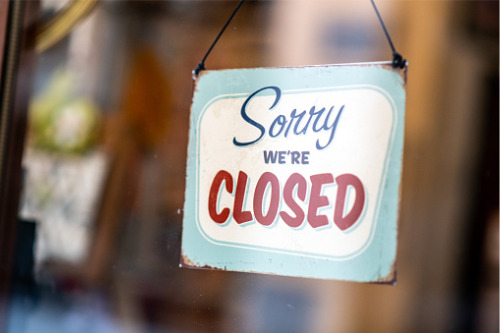One more sign that the U.S. economy has yet to tear itself free from the anchor of COVID-19 was delivered last week when another prominent U.S. mall owner announced its plans to file for bankruptcy.
Citing a deadly combination of diminished foot traffic, still-shuttered storefronts and shrinking rents, CBL said the company was in the process of working with creditors to alleviate $900 million worth of debt and $600 million of other obligations; gargantuan sums, but still only half of the $3 billion the company owes.
“Reaching this agreement with our noteholders is a major milestone for CBL,” company CEO Stephen Lebovitz said in a statement. “The agreement will significantly improve our balance sheet by reducing leverage and increasing net cash flow and will simplify our capital structure, providing enhanced financial flexibility going forward.”
Going forward could be an issue. CBL, owner of more than 100 properties in 26 states, traffics heavily in the kind of properties that are being decimated by both COVID-19 shutdowns and evolving consumer expectations: strip malls and other similarly un-trendy properties in less affluent areas. Long dependent on struggling anchor tenants like J.C. Penney, Forever 21 and Sears – each one closing stores left and right – CBL has struggled to maintain big-name retailers willing to pay for space. CBL attempted to attract innovative tenants as replacements, such as casinos and gyms, but failed to gain traction with shoppers.
COVID-19 was the end of CBL’s current business model. The company collected only 27 percent of billed cash rents in April. As of August 18, its July rent collection rate had climbed to only 49 percent.
“They never got their debt to a place where they could get through the next downturn like we’re seeing now,” said Vince Tibone, a senior analyst at Green Street Advisors, told Bloomberg.
Lebovitz, however, rang an optimistic note while announcing the company’s bankruptcy.
“[W]e will emerge as a stronger and more stable company, with an enhanced ability to execute on our key strategies of diversifying our sources of revenue and transforming our properties from traditional enclosed malls to suburban town centers,” he said.
CBL is not alone in its struggles. Triple Five Group, which owns Mall of America, is digging its way out of $1.39 billion debt.
CRE in distress
Malls aren’t the only commercial real estate segment taking it on the chin. Moody’s Investor Service found that more than $54 billion in commercial mortgage backed securities have been sent to servicers since the beginning of the COVID-19 crisis, primarily due to payment delinquencies. That figure marks a 320 percent increase from pre-pandemic levels.
Hotel and retail properties account for 89 percent of the special servicing balance, said Moody’s Keith Banhazl.
Moody’s also found that the rate of severely delinquent loans, defined as being more than 121 days late, almost tripled from July to August. In August alone, $5.4 billion in loans were transferred to special servicers.
In its August 3 white paper, COVID-19 and Distress in the CMBS Markets, Moody’s analysts wrote that a combination of stressed property reserves, the end of government relief programs and accelerating rates of COVID-19 infection could result in “several waves of shutdowns, further distress , and borrower capitulation.”

